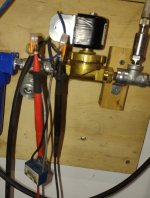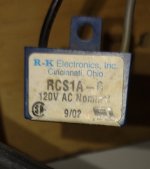electrofelon
Senior Member
- Location
- Cherry Valley NY, Seattle, WA
- Occupation
- Electrician
What is the difference between these two? The definitions are provided by the manual. Mainly interested in current.
1. RMS max
- Greatest, maximum value of the RMS voltage or current which occurred during the recording time.
2. PEAK max
- The greatest instantaneous value of voltage or current (the highest point of the sinusoid)
1. RMS max
- Greatest, maximum value of the RMS voltage or current which occurred during the recording time.
2. PEAK max
- The greatest instantaneous value of voltage or current (the highest point of the sinusoid)



